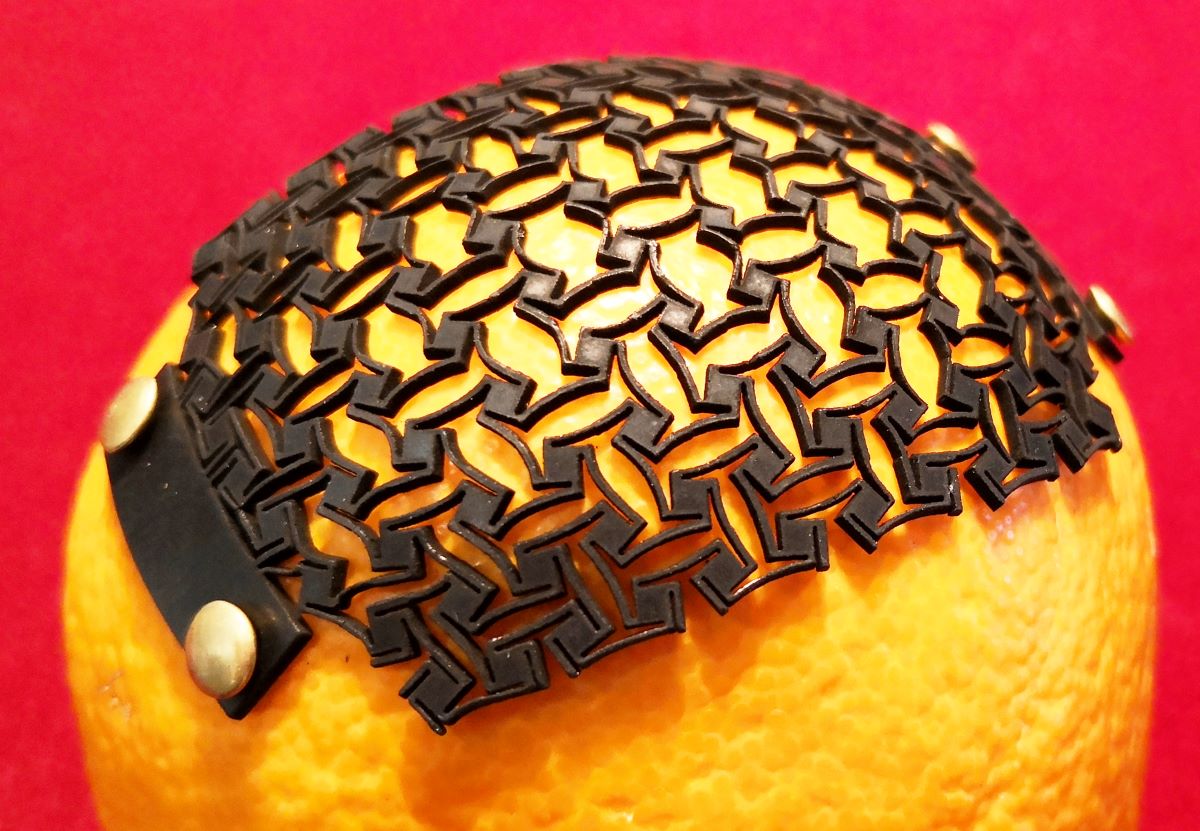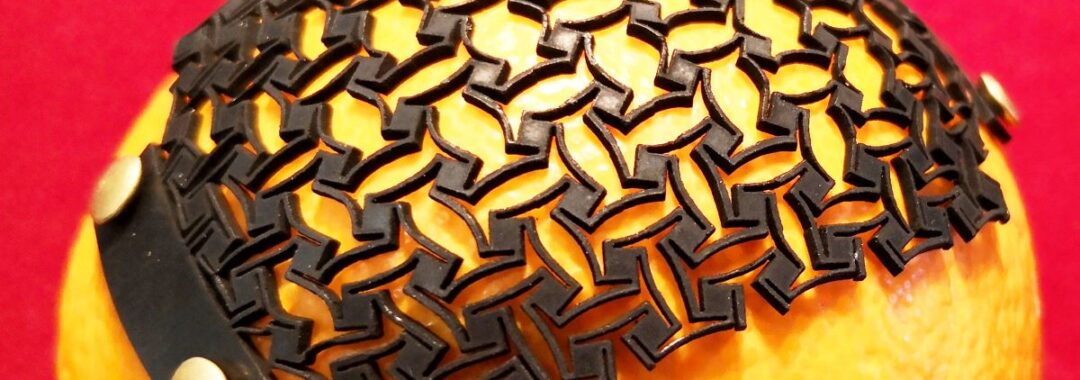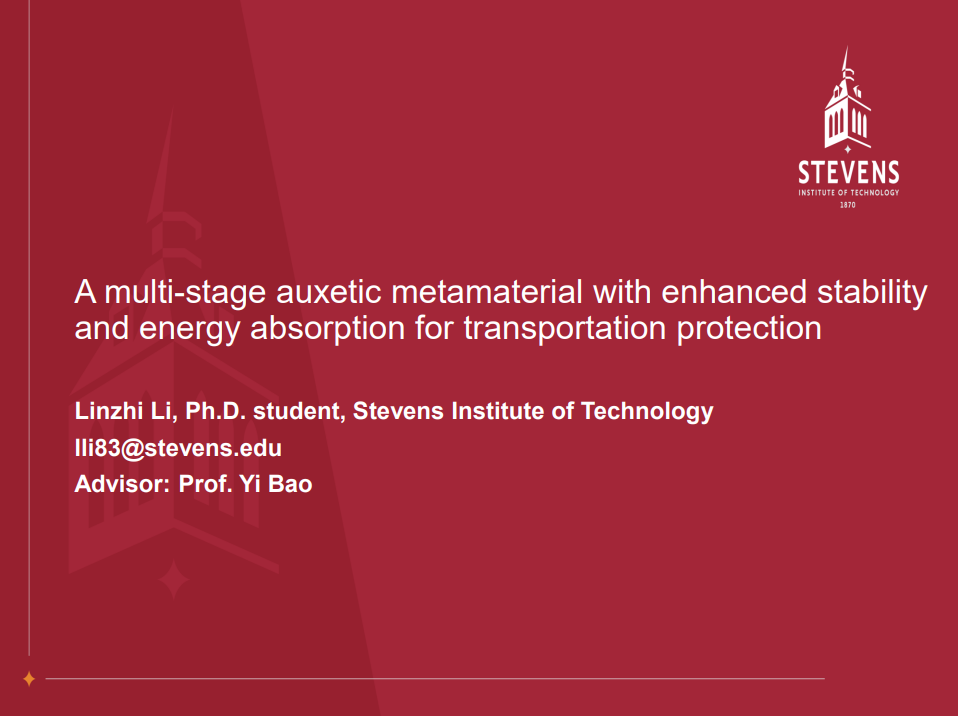Presenter: Linzhi Li
Organization: Stevens Institute of Technology
SAFETY

Abstract:
Protective barriers in transportation engineering require materials that are lightweight, highly energy-absorbing, and capable of mitigating vibration. Auxetic metamaterials, with their negative Poisson’s ratio (NPR) arising from geometric design, offer significant potential. However, conventional lattices often suffer from low load-bearing capacity and unstable deformation, restricting their application in infrastructure.
This study designs a multi-stage auxetic metamaterial that integrates rotating, re-entrant, and chiral mechanisms to enhance energy absorption, load-bearing capacity, and structural stability, evaluated through quasi-static compression analysis. Results show that the lattice sustains NPR behavior up to 60% strain, forms two distinct stress plateaus, and achieves nearly twice the specific energy absorption of existing multi-stage designs while maintaining stable deformation.
By combining lightweight architecture, enhanced energy absorption, and reliable multi-phase stability, the proposed metamaterial provides a promising solution for crash barriers, bridge protection, and vibration-damping systems in transportation engineering.
Linzhi Li is a Ph.D. student in the Department of Civil, Environmental, and Ocean Engineering at Stevens Institute of Technology, supervised by Professor Yi Bao. Her research focuses on the design and optimization of mechanical and auxetic metamaterials for vibration mitigation, energy absorption, and structural protection in civil and transportation engineering. Her recent work develops multi-stage auxetic lattices that integrate rotating, re-entrant, and chiral mechanisms to achieve enhanced stability and load-bearing performance.


